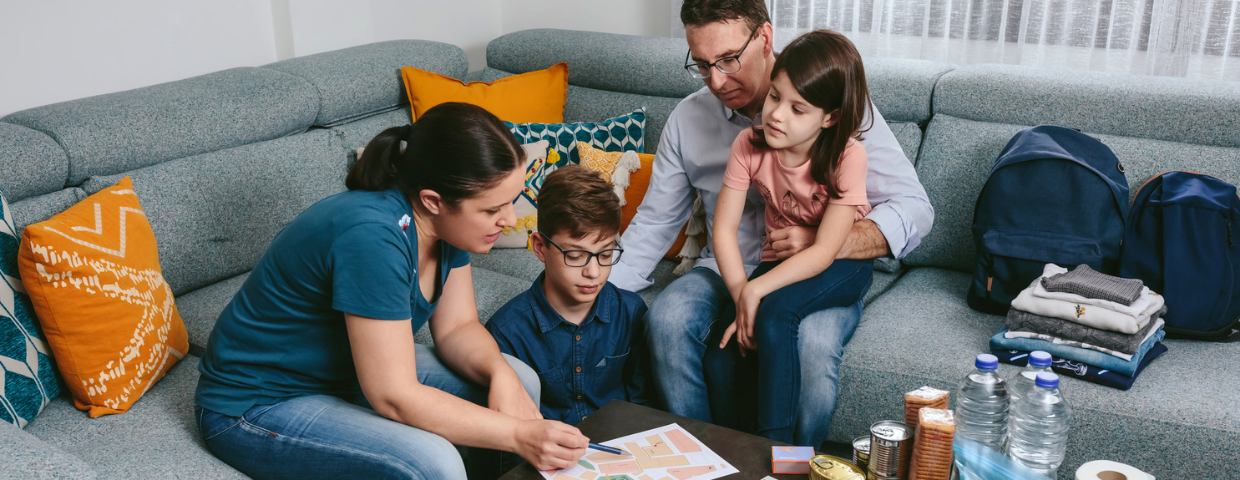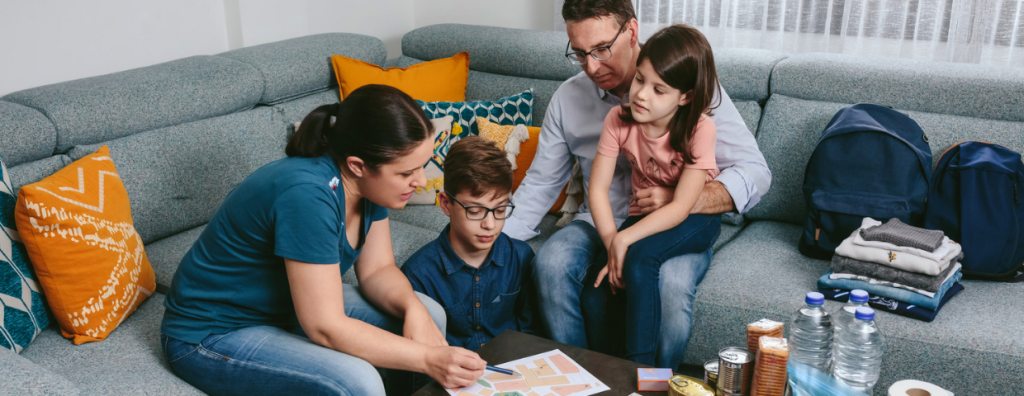
With homeownership comes the responsibility of having to plan ahead for life’s unknowns. Emergencies come in many forms, depending on your local climate. So whether its more likely that you and your household need to prepare for the potential of a wildfire, a flood, or a winter storm, it’s crucial to have resources on hand to limit the damage to your home and to protect your household.
Tips for Emergency Preparedness
A good place to start when putting together your emergency kit is to compile basic resources you and your household will need to support yourselves outside of your home. Keep all items together in an easily accessible location. The general rule is to have at least one gallon of water per person, per day. This is useful for drinking, food preparation, and general hygiene. The Red Cross suggests keeping a two week’s supply of water at your home and three days worth in the case of evacuation. The following information is based on the American Red Cross’s emergency preparedness website.
What to include in your home emergency kit
- A two-week supply of non-perishable food that is easy to prepare
- Flashlight and extra batteries
- Battery-powered or hand-crank radio
- 2 absorbent compress dressings (5 x 9 inches)
- 25 adhesive bandages (assorted sizes)
- 1 adhesive cloth tape (10 yards x 1 inch)
- 5 antibiotic ointment packets (approximately 1 gram)
- 5 antiseptic wipe packets
- 2 packets of aspirin (81 mg each)
- 1 blanket (space blanket)
- 1 breathing barrier (with one-way valve)
- 1 instant cold compress
- 2 pair of non-latex gloves
- 2 hydrocortisone ointment packets (approximately 1 gram each)
- Scissors
- 1 roller bandage (3 inches wide)
- 1 roller bandage (4 inches wide)
- 5 sterile gauze pads (3 x 3 inches)
- 5 sterile gauze pads (4 x 4 inches)
- Oral thermometer (non-mercury/non-glass)
- 2 triangular bandages
- Tweezers
- First aid instruction booklet
To-Go Bag
Keep a to-go bag on hand to ensure that you and your household have easy access to essential items such as medication, toiletries, chargers, cash, and more.
- If you or family members have medications, make sure you have at least a seven day supply
- Multi-purpose tool (Swiss army knife)
- Sanitation and personal hygiene items
- Hand sanitizer
- Toothbrushes and toothpaste
- Personal wipes
Personal documents
- Copies of personal documents (medication list and pertinent medical information, proof of address, deed/lease to home, passports, birth certificates, insurance policies)
- Family and emergency contact information
- Extra cash
- Extra cell phone chargers
- Emergency blanket(s)
Car Kit
In the case of an evacuation or car emergency you should have a supply kit that can last up to three days.
- A three-day supply of water in the case of an evacuation (one gallon per person per day)
- Three days’ worth of non-perishable food
- First aid kit
- Flashlight with extra batteries
- Extra phone charger
- Emergency blanket
- Map of your area
Pets
If you have pets, you will want to pack additional supplies to ensure their safety in the event of an emergency. It’s a good idea to have a week’s worth of food for each pet, a gallon of water per day, medication on hand, an additional leash, a crate, and any relevant sanitation materials (pet bags, litter, etc.).
Keeping Your Sanity
If you have small children, you may want to include activities for them to stay occupied without the help of electricity. Small games, coloring books and supplies, and other items can be stashed in the emergency kit to keep the family occupied.
For more information on preparing for potential emergencies and disasters, read our blog post about preparing for a fire at home.
 Facebook
Facebook
 X
X
 Pinterest
Pinterest
 Copy Link
Copy Link


